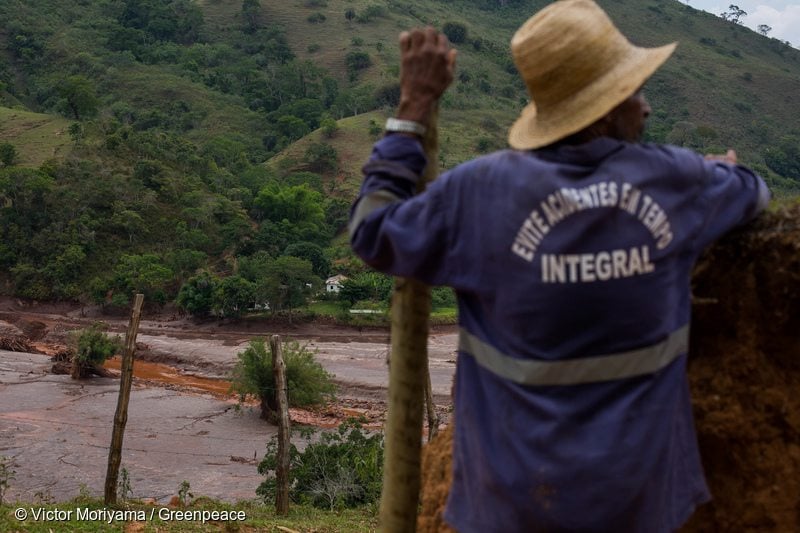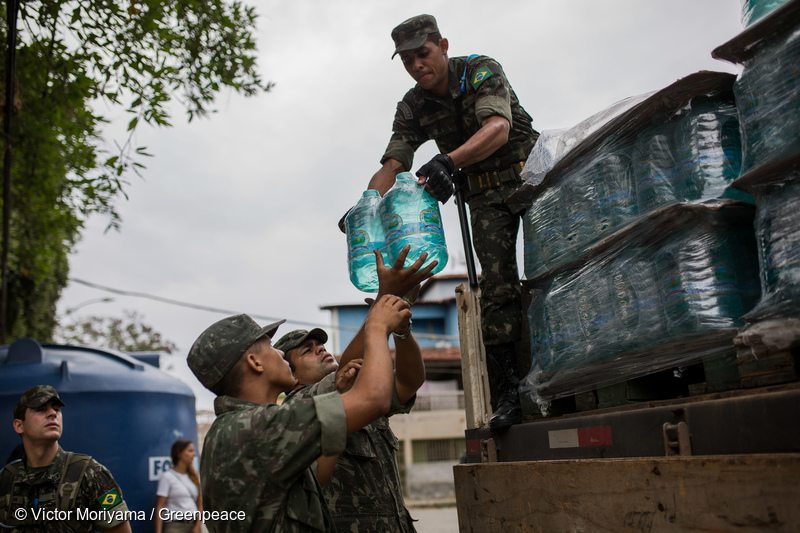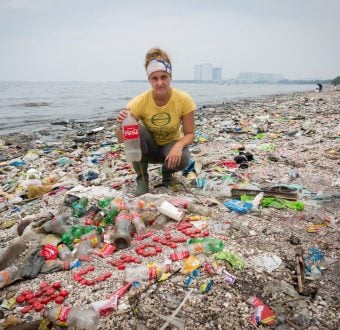This article was originally published by Greenpeace International.
Following the collapse, more than 25,000 Olympic swimming pools worth of mud — full of dangerous toxic metals like manganese and mercury — overtook the nearby mining community of Mariana in the state of Minas Gerais. At least 17 people were killed. Hundreds more have been displaced by the wall of sludge released.
The mud surged through rural communities and into the Rio Doce, a major river stretching across southeast Brazil. Since November 5, it has been slowly working its way downstream — contaminating the drinking water of hundreds of thousands of people and turning protected forest and habitat into a desert of mud. The devastation is expected to spread over 500 kilometers as contaminants from the sludge make their way towards the Atlantic coast, eventually endangering the Abrolhos National Marine Park.

Mud riddled with toxic mining waste washes across the landscape in the state of Minas Gerais in southeastern Brazil.
Who’s Responsible?
Since the disaster, Greenpeace Brazil has been working alongside local organizations to monitor the damage and demand a complete and independent investigation of its cause, as well immediate financial compensation for the victims.
The mining company in charge of the dam, Samarco (controlled by Vale and Anglo-Australian BHP Billiton), has acted irresponsibly in the face of this tragedy. There was no contingency plan for a situation like this, and at-risk communities were never prepared for a disaster of this magnitude. So far these companies have been fined $1 billion BRL ($261 million USD), but this doesn’t begin to cover the costs of the disaster.
Meanwhile, authorities in Minas Gerais state continue to cater to corporate interests over the public good. The operational license for the dam that collapsed was not recommended due to risk of destabilization. Yet this year, the government of Minas Gerais has proposed new legislation to accelerate environmental licenses for the mining sector. The state already has more than 700 waste dams, but only four public employees to monitor them.

Brazilian Army officials assist with the distribution of water in the city of Governador Valadares. The Rio Doce, a major water source in the region, is laden with toxic mud and minerals.
What Comes Next?
Over last few days, Greenpeace Brazil has been investigating the path of destruction caused by the Samarco dam rupture, listening to people’s stories and documenting the devastation. You can see photos from this expedition here. And Greenpeace teams will continue to monitor and document as the mud’s contaminants make their way to the ocean.
When all is said and done, this disaster will affect thousands of lives: particularly fishermen, ranchers, city-dwellers and the Krenak Indigenous people. The natural environment between the states of Minas Gerais and Espírito Santo is suffering immeasurably. There is no time to lose in supporting the victims, investigating and punishing those responsible for this tragedy and minimizing the effects on the environment.
We hope you’ll stand in solidarity with the communities affected by this terrible tragedy. Share their story to pressure those responsible and visit Greenpeace Brazil (Portuguese) for more ways to help.

